Bread Flour vs All Purpose Flour
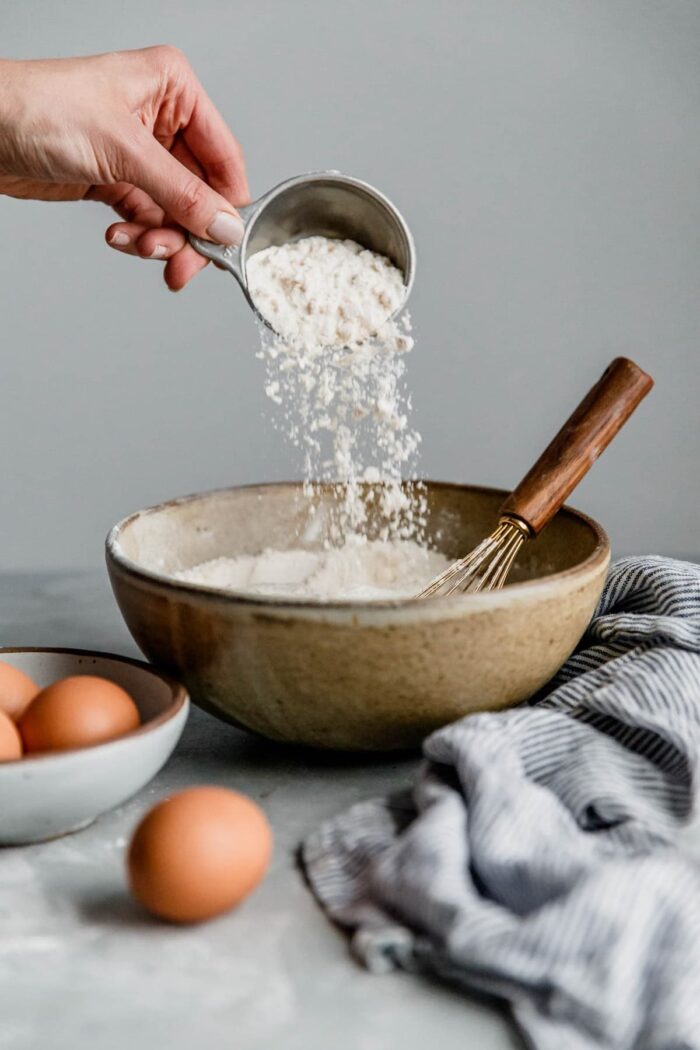
We’re doing a deep dive on bread flour vs all purpose flour!
Ever since I started baking and sharing sourdough recipes, I’m often asked whether you can substitute bread flour with all purpose flour, and vice versa. During flour shortages and price increases, this is a particularly valid baking question.
Before answering (spoiler: yes – but with reservations!), it is important to understand the fundamental difference between bread flour and all purpose flour.
This knowledge will make you a more intuitive baker and improve the outcome of your baked goods.
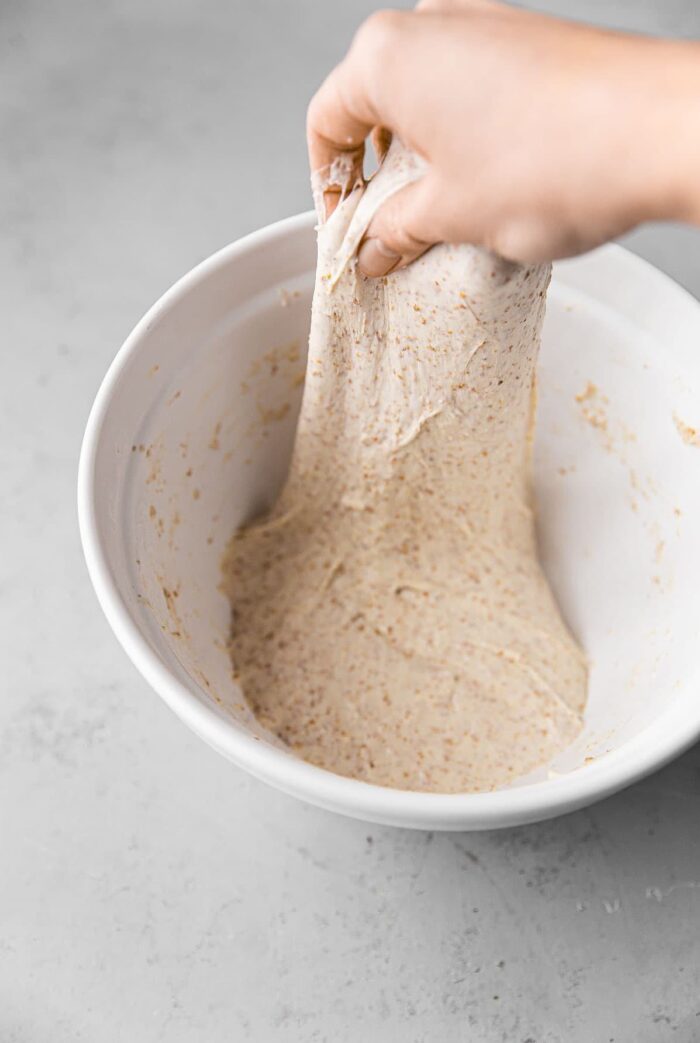
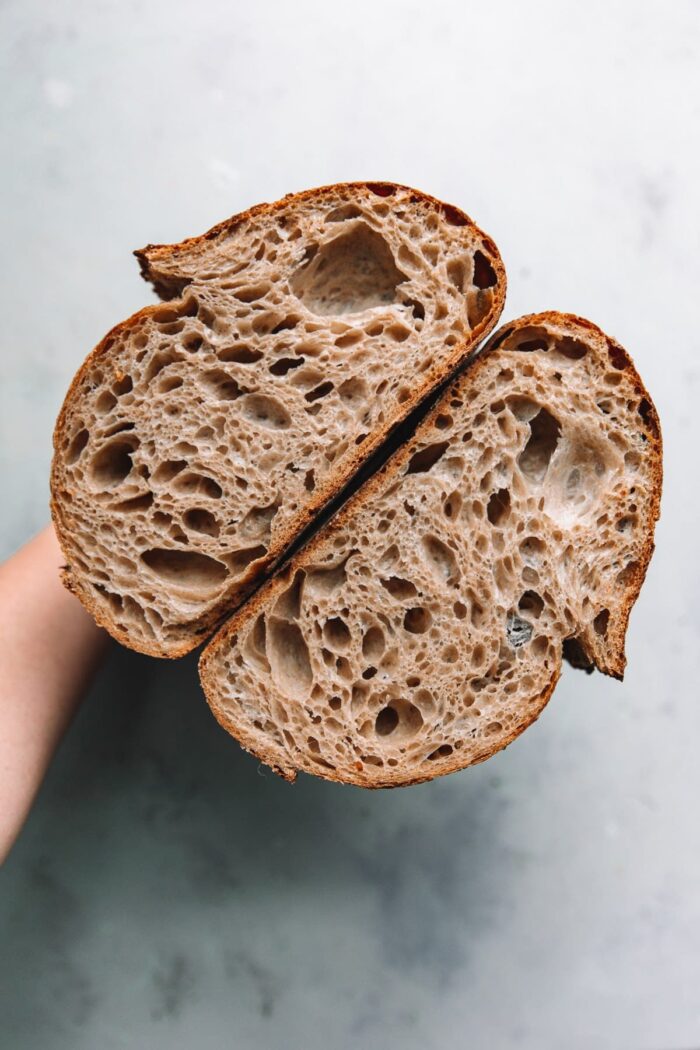
Main Difference Between Bread and All Purpose Flour
Bread and all purpose flour are both refined flours, which means the germ and bran are removed.
The key difference between bread flour vs all purpose flour is protein. Bread flour contains more protein than all purpose flour. Why?
They are made with different strains of wheat. Bread flour is milled from hard red spring wheat (higher in protein). All purpose flour is milled from soft or hard red winter wheat (lower in protein).
- All Purpose Flour: 10%-12% protein
- Bread Flour: 12%-13.5% protein
Brand Differences: Protein content varies brand to brand (eg. King Arthur AP Flour is 11.7% protein vs. Gold Medal Unbleached AP Flour is 10.5%). It can also fluctuate seasonally, batch-to-batch.
Bleached vs Unbleached All Purpose Flour: Due to the bleaching process, bleached flour typically contains less protein than unbleached flour (eg. White Lily Bleached AP Flour is 8-9%).
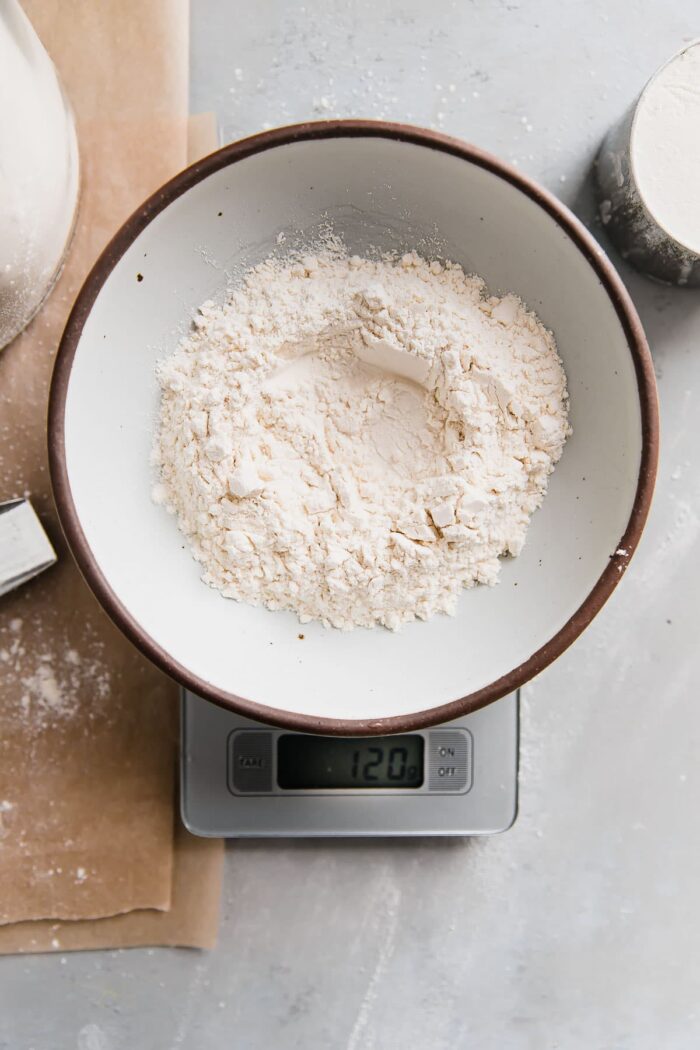
How Does Wheat Protein Impact Baked Goods?
When mixed with water or liquid, wheat protein produces gluten development. High protein flours, such as bread flour, allow for increased gluten development (eg. strength, elasticity, and structure) in doughs and batters.
These proteins create slinky-like structures that are strong and elastic, allowing dough to stretch, expand, and, most importantly, trap air. This helps produce crisp crusts, chewier textures, and higher rise and volume in breads.
Kneading and other shaping techniques, including stretch and folds and lamination, work to strengthen and concentrate these gluten networks.
Note: Higher protein doesn’t always lead to increased elasticity and strength in dough (eg. whole grain flours). Other ingredients, such as fat and salt, impact gluten development too. For more information on this, check out this article on different types of flours and when to use them.
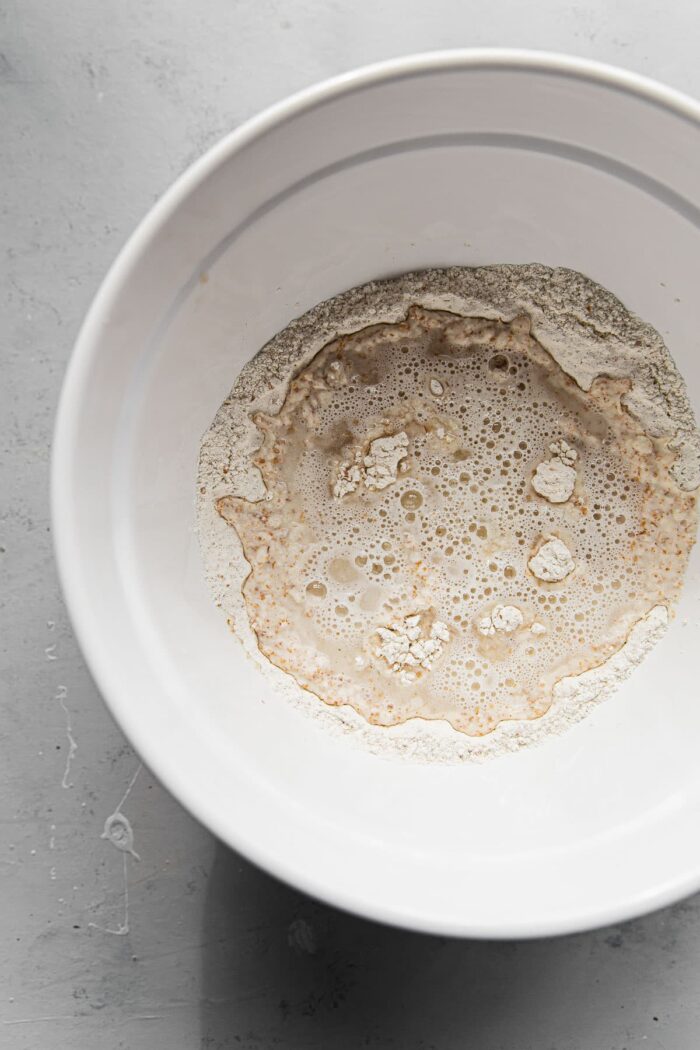
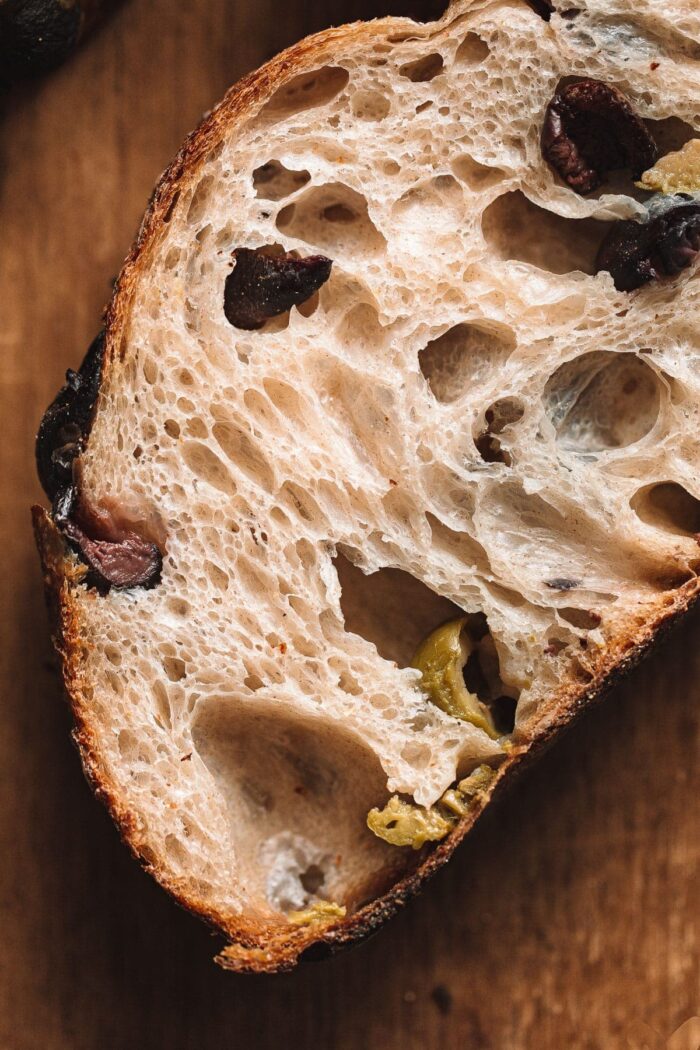
Protein + Water Absorption
High protein wheat flours absorb more water (liquid) than lower protein wheat flours. And vice versa, all purpose flour is less absorbent than bread flour.
Lower protein flours simply cannot absorb as much water as their high protein counterparts. As you can imagine, this becomes important when you’re adapting recipes or making flour substitutions.
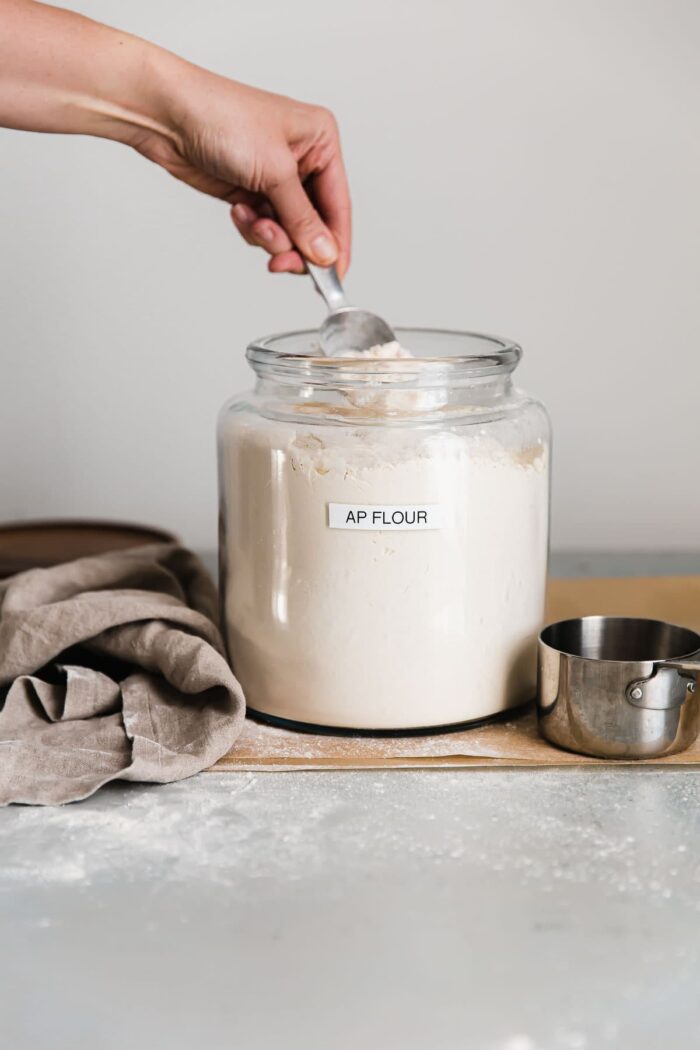
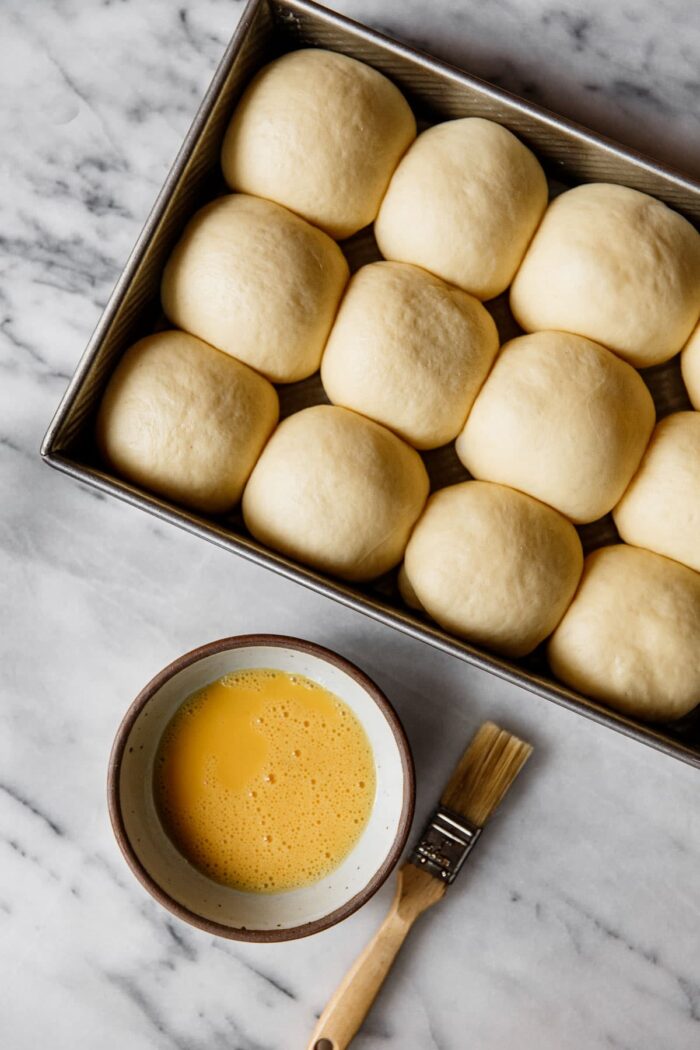
Can You Substitute Bread Flour with All Purpose Flour?
If a recipe calls for bread flour (or other high protein flour), it is best to stick to the recipe. This ensures that you’ll achieve similar results in texture and outcome.
With that said, you can substitute bread flour with all purpose flour. This type of substitution is better reserved for tender baked goods like dinner rolls than sourdough, bagels, or pizza, which are prized for their chewier crumbs and crusts.
Substitution Note: Since bread flour absorbs more water than all purpose flour, I always recommend reducing water/liquid slightly when substituting. Be aware that the dough may be stickier and less elastic by nature, and won’t hold its structure or rise quite as well.
Tip for Success: Flour protein levels vary significantly by brand, so it is best to substitute bread flour with a higher protein all purpose flour, such as King Arthur, for better results. Keep these brand variances in mind!
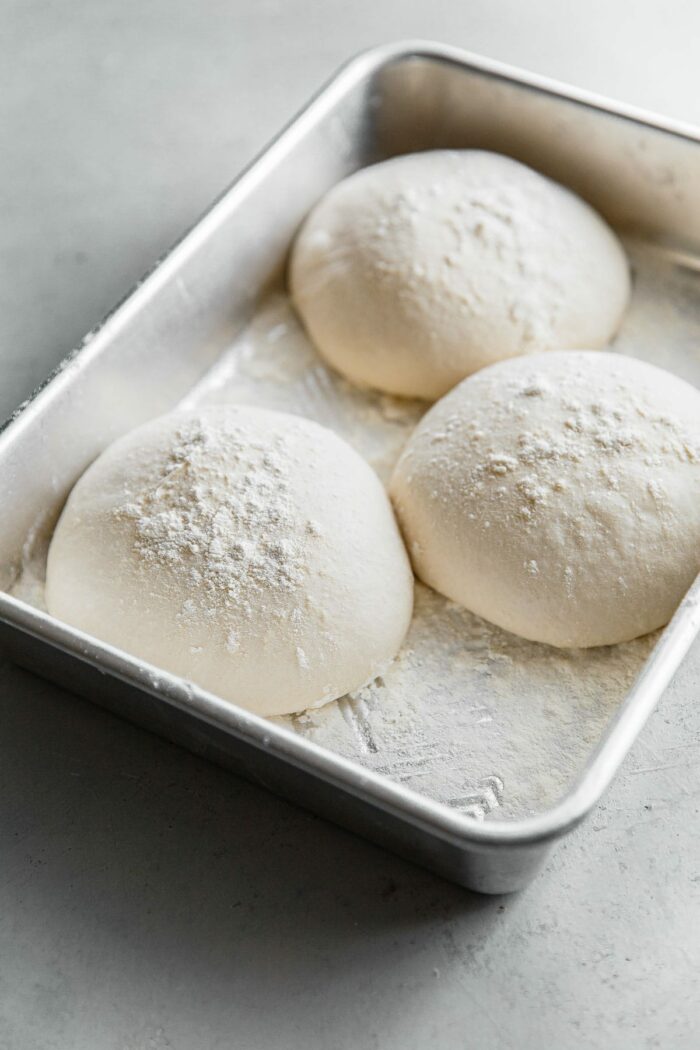
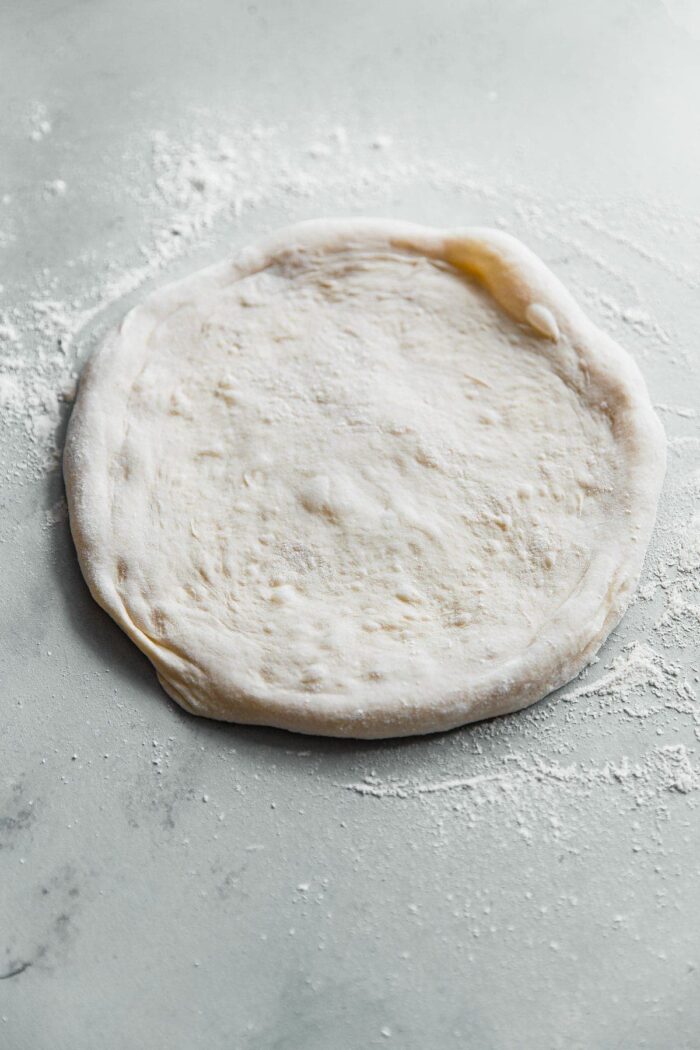
Vice Versa, Can You Substitute All Purpose Flour with Bread Flour?
Yes, but ideally only when you wish to increase the properties (chew, structure, rise, elasticity) attributed to high protein flours.
Many bread and pizza dough recipes call for all purpose flour to make them more accessible to home cooks. If your favorite no knead French boule or Margherita pizza recipe uses all purpose flour and you wish for a chewier texture, feel free to substitute with bread flour.
Cookies made with bread flour are a perfect example of adapting recipes to suit your taste. If you love extra chewy (less tender) chocolate chip cookies, try replacing a portion of the flour with bread flour and see the results!
When NOT to Substitute Bread Flour: Bread flour should never be used in place of all purpose flour in tender baked goods, such as cakes, pancakes, waffles, quick breads and muffins, or brownies. Low gluten development is preferable for baked goods in these categories. For more in depth information, reference this cake flour vs al purpose flour article.
Substitution Note: Increase water/liquid slightly when using bread flour as a substitute, otherwise your dough may be significantly drier and harder to properly develop. Expect greater elasticity and dough strength.
Other Resources You May Find Helpful:
- Other Types of Baking Flours (and the Differences Between Them)
- Cake Flour Vs Baking Flour
- How to Measure Flour
- Favorite Bread Baking Tools
- Understanding Gluten

14 Comments on “Bread Flour vs All Purpose Flour”
Btw, I love seeing all those air holes in your bread photos. That why I bought Bread flour, hoping my bread will be light and airy. Unfortunately none of the classic recipes seem to use bread flour!!!
Thank you for your tips to increase water slightly when using bread flour as a substitute for all purpose. When you say “slightly”, how much water should I then increase in my recipe using 10-1/2 ounces of whole wheat BREAD flour, and 3-3/4 cup liquid per the recipe? The actual recipe uses All Purpose flour.
Thank you for your help, as this is my first time experimenting with bread making!
when bread flour and ap flour are side by side, how can you tell which one is which? is there a test that can be done to determine which one is bread flour and which one is ap flour?
Not sure what you mean exactly or what the intention would be behind this experiment…as in, a blind comparison of two flours? If you knew that you were working with either all purpose flour or bread flour, you could add the same amount of water to each (again, this is assuming you’ve measured out equal weights of each flour). Bread flour will be able to absorb a lot more water, so it would be drier than the all purpose counterpart.
Do I leave the lid slightly open on the feed jar?
I’m assuming you’re referring to a sourdough starter here. If so, it should be covered but not at all airtight!
I’m in South Africa, where nothing is branded as “all-purpose flour”, so a lot of American recipes cause confusion. We have a wide variety of bread flours, and then cake flour.
Yes! This guide is definitely tailored towards American bakers – usually all purpose in the states is called “plain” flour in other countries? Unfortunately since I live in the United States and don’t have access to other countries’ flours, I can’t always know or provide the right substitute name for people in different areas of the world. Cake flour is definitely different though…so I have a feeling there is a better option available for you, I just do not know how it is labeled unfortunately.
When using bread flour how much more water is needed in comparison to all purposes?
Unfortunately I can’t give an exact replacement ratio because every brand and even batch of flour can vary a bit in properties – it’s just something to keep note of especially if making adaptations!
I’m a little confused with your term “tender” baked goods. I already use King Arthur all purpose unbleached flour. Can you explain what you mean by tender?
My daughter and I were just discussing this exact topic.
Tender crumbed baked goods are things like cakes, biscuits, pancakes, waffles, etc. You want a tender, delicate crumb for something like a cake; very low gluten development (why it’s very important not to over mix a batter!). Opposite of chewy! This is a guide specifically about bread flour vs. all purpose flour, as I get a lot of questions on whether you really need bread flour for things like sourdough, bagels, bread, etc.
All purpose is designed exactly as it sounds, for general baking needs. Hope this helps clarify!
Thanks for this information! It will be a nice reference to have 🙂 I always use AP flour but never have needed bread flour and have been wanting to try making some recipes that call for it.
Yes! I think you’ll notice a big difference for certain baked goods – depends on how much bread, pizza, etc. you make! If you do happen to make rolls or no-knead bread that use all purpose flour, try swapping out the AP for bread flour!